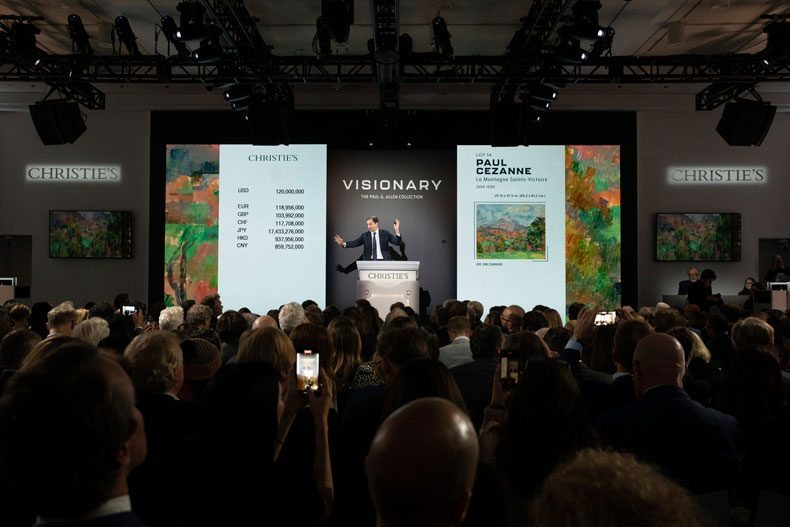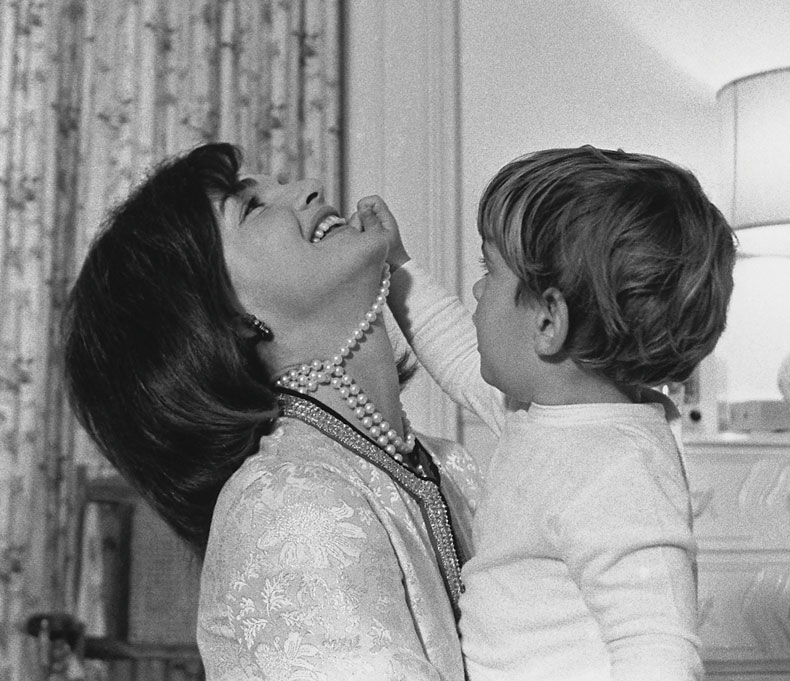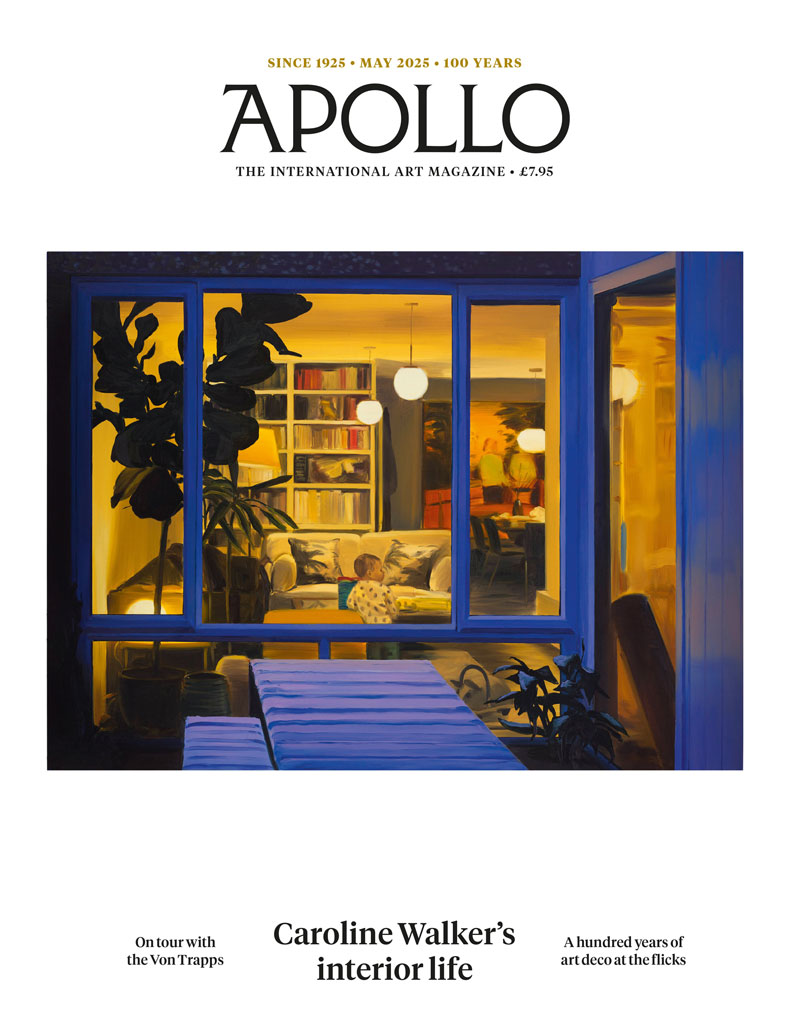From the May 2025 issue of Apollo. Preview and subscribe here.
Leonard Riggio is not a household name in the UK – but his life story reads like a page from the playbook for the American Dream. The son of a boxer-turned-cabbie, he fell in love with literature at night school, dropped out and set up a student bookshop on the NYU campus. In 1971, aged 30, he raised a loan to buy an old-fashioned store on Fifth Avenue called Barnes & Noble. By the end of the 1990s he had hundreds of shops across the United States and a fortune estimated at $700m. Thomas Saunders is even less well known outside wealthy New York circles. A successful banker, from 2009 to 2018 he was also the chairman of the influential conservative think tank the Heritage Foundation.
Saunders and Riggio, who died in 2022 and 2024 respectively, might not have had much in common (Riggio was famously liberal) but both were enthusiastic art collectors. They had large apartments on Park Avenue – Riggio’s filled with Warhols, Mondrians and Picassos, Saunders’s with Old Masters – and works from both are on the block in New York this month. Christie’s will kick off its 20th and 21st century evening sale with ‘Leonard & Louise Riggio: Collected Works’ (week commencing 12 May), while Sotheby’s will hold ‘Elegance & Wonder: Masterpieces from the Collection of Jordan and Thomas A. Saunders III’ the following week (21 May).
New York auctions in May are seen by many as a barometer of the health of the international art market. Expectations had been quietly growing after slim London sales in March returned good results and there were positive reports from Art Basel Hong Kong. But confidence plummeted in April as Trump’s tariffs and the first international countermeasures came into force. While none have targeted art specifically, valuable works are shipped around the world routinely: a bidder in New York could just as likely be a Chinese entrepreneur or a European museum as a Wall Street banker. So these two ‘single-owner sales’, as they are called in the trade, could be bright spots in what promises to be a shaky New York season.
Sotheby’s is billing the Saunders works as ‘one of the greatest collections of Old Masters to come to auction in recent memory’. If the 56 works achieve their collective estimate of $78m to $114m, it will certainly be the highest value group of Old Masters from a single owner sold at auction. (That record is currently held by the $76m made for 11 works sold by real-estate entrepreneur Mark Fisch and his wife Rachel Davidson at Sotheby’s New York in 2023 as part of an acrimonious divorce settlement.)
The Saunders collection was put together primarily by Thomas’s wife, Jordan, who was advised by George Wachter, Sotheby’s chairman, Old Master expert and the organiser of this auction. Jordan started buying in the late 1990s and favoured Dutch still lifes, Italian landscapes and sentimental portraits rather than religious paintings. Wachter describes the collection as ‘highlight after highlight, [since] they wanted the best of the best and in perfect condition’.

View of Olinda, Brazil, with the Ruins of the Jesuit Church (1666), Frans Post. Courtesy Sotheby’s
The star lots are a floral still life by Jan Davidsz. de Heem (estimate $8m to $12m) and a still life from the 1760s by the Italian painter Luis Meléndez, with an exquisitely painted cauliflower at its centre, which is estimated at $5m to $8m. But some of the greatest interest is being generated by a large 17th-century landscape, View of Olinda, Brazil, with the Ruins of the Jesuit Church (1666), by another Dutch artist, Frans Post (estimate $6m to $8m). The couple bought it ‘in a filthy state’ in 1998 for $2.2m after it was discovered in a Connecticut barn. Wachter says it is attracting attention from museums, as works by Post rarely appear on the market. ‘It’s in great condition, with little anteaters and alligators crawling in the foreground – it’s just what people want.’
The Riggios, meanwhile, are best known for collecting Arte Povera and minimalist works and for their support of the Dia Foundation. Leonard was Dia’s chairman from 1998 to 2006 and the driving force behind Dia Beacon, donating $30m. Their country home at Bridgehampton has its own sculpture park, with monumental works by Richard Serra, Walter De Maria and Maya Lin. The 39 works being sold at Christie’s, with an estimate of $250m, are from an earlier collecting period, Riggio’s wife, Louise, told the New York Times. This auction also has many star lots, the most expensive of which is Composition with Large Red Plane, Bluish Gray, Yellow, Black and Blue (1922) by Piet Mondrian, with an estimate of $50m. Others include a Magritte from his L’empire des lumières series (1949, estimate $30m) and a portrait of Lee Miller by Picasso from 1937, with an estimate of $20m.
Few single-owner collections were sold last year, which some say contributed to the auction houses’ weak results. But this is expected to change, as a generation of major collectors reach old age and decide to cash in. In the past five years more than $10bn of art has been sold in single-owner collections through Sotheby’s and Christie’s, almost double the total from 2015 to 2019. ‘Provenance has played a massive part in what art has made over the past 20 years,’ says Jussi Pylkkänen, former president of Christie’s and now an independent art adviser. ‘The fact that a work might have been bought by a trustee of the Museum of Modern Art or a patron of the Art Institute of Chicago has become very meaningful, particularly in America.’ It is not, he admits, entirely logical. ‘Buying works of art isn’t just driven by the mind, it’s also driven by the heart, and if the work belonged to someone you respected it can hugely influence the value of an object,’ he says.
In 2022, the sale of Microsoft co-founder Paul Allen’s collection became the biggest art auction ever, making $1.5bn in a single evening at Christie’s New York (Pylkkänen was the auctioneer). It took place just six months after another record auction – the $922m sale of art belonging to another pair of squabbling divorcees, Harry and Linda Macklowe. Famous collections can excel even when the rest of the market is dire – and can lift the whole season. In February 2009, Christie’s auctioned the collection Yves Saint Laurent had built with his business and life partner, Pierre Bergé. The collection eventually made $483.8m in three days in the fabulous setting of the Grand Palais.
‘The great thing about a collection sale is that you have an incredibly strong and rather romantic narrative of the journey of a collector, their discernment, their relationships with the trade, their relationships with curators, maybe directly with artists,’ says Orlando Rock, chairman of Christie’s UK. ‘The Saint Laurent sale took place when the market had collapsed but it inspired everyone. The Grand Palais was filled with people who suddenly decided they had to have something from his collection.’

The sale of Microsoft co-founder Paul Allen’s collection at Christie’s in New York became the biggest art auction in history. Photo courtesy Christie’s
Great collection sales are woven into auction house history. One of Sotheby’s earliest sales was of Napoleon Bonaparte’s library in 1823. Christie’s famously secured the sale of the contents of Stowe, the home of the Duke of Buckingham and Chandos, in 1848 – including the so-called ‘Chandos’ portrait of Shakespeare.
In 1973, Robert and Ethel Scull – who ran a huge taxi firm – sold 50 works by living American artists including Robert Rauschenberg, Jasper Johns and Claes Oldenburg for $2.2m at Sotheby’s New York (Rauschenberg was outraged, accusing Scull of profiteering). Twenty-three years later, Sotheby’s put 1,300 items of personal ephemera owned by Jackie Kennedy on the block: the relatively modest items flew past their $5m estimate to make $34.5m. These two sales presage current auction strategies: selling celebrity collections and packaging high-value modern and contemporary art as ‘once-in-a-lifetime’ opportunities.
The auction houses have built up big teams to do this. Since 2020 – when Pace, Gagosian and Acquavella clubbed together to secure the collection of MoMA trustee and banker Donald Marron – galleries have also entered the fray. Sotheby’s and Pace were rumoured to have joined forces to secure the Riggio collection, although neither would comment. Insiders say we are likely to see more of these kind of hybrid arrangements – the auction house creating the ‘wow’ factor and the galleries offering access to discreet private buyers.
‘Single-owner sales are an obsession, one that has only become greater over time,’ says Brooke Lampley, former global head of fine art at Sotheby’s and now a senior director at Gagosian. ‘A collection is a shortcut to expertise, to experience, to taste. In a world where there is more and more [to choose from], people are looking for differentiation’, and the single-owner collection provides that. But, she says, the deals to secure them are getting tougher.
All sorts of things go in to the deal. Auction houses nearly always drop their sellers’ fees: an attempt in 2024 by Sotheby’s to reintroduce a 10 per cent fee lasted less than a year. They offer guarantees – a minimum amount the seller will get – regardless of the result. This could leave the auction house holding an unsold work or, if the risk has been laid off to a third party, reduces the amount the auction house can make if the work goes over a minimum agreed price. They can offer what is called an ‘enhanced hammer’ – giving the seller some of the auction house’s buyer’s premium. Then there are the costs for films about the auction, luxurious printed catalogues and expensive international exhibition tours.

Jackie Kennedy photographed at the White House in 1962 with her son John F. Kennedy Jr. Some 1,300 personal items belonging to the former First Lady were sold by Sotheby’s in 1996. Photo: Everett Collection Historical/Alamy Stock Photo
Mario Tavella, chairman of Sotheby’s Europe, is only half joking when he says: ‘The reason I’m still here after 35 years is because I have been so involved in single-owner sales.’ He thinks he has worked on 100. ‘We like single-owner sales because once people like the story, like the personality behind the sale, you cannot stop them. We can make a good profit, but if we have to compete for the consignment then our margins are eroded. You don’t make a lot of money if you sell everything within estimate.’
There are other risks too. ‘A lot of the [older] American collectors were unglamorous, unassuming people who had amazing opportunities to buy great art in the 1950s, 1960s and 1970s,’ says Morgan Long, former managing director of the Fine Art Group and now an independent art adviser. ‘Those are the collections that are coming to market now. But dressing such people up like celebrities isn’t going to work.’ Taste may also be changing. ‘We don’t seem to see people fighting for some of the things they used to, like a great Franz Kline or a great Robert Motherwell,’ Long says. ‘You are going to have to work hard to put the same kind of buyers on the front row who were there a decade ago.’ Meanwhile, both auction houses are doing everything they can to make their May sales a success. Sotheby’s toured some of the Saunders paintings to London, Amsterdam, Brussels, Los Angeles and Hong Kong and has offered Jordan Saunders a guarantee. Christie’s declined to comment on whether it has done the same for Louise Riggio. It sent several of the paintings to London, Hong Kong, Paris, Dubai and Los Angeles before the sale.
Perhaps the bigger question is whether, as time goes on, younger generations of collectors will still feel the mystique. In the past, single-owner sales were special events. But as more and more collections come to market, will their magical – and profitable – aura endure?
From the May 2025 issue of Apollo. Preview and subscribe here.















![Masterpiece [Re]discovery 2022. Photo: Ben Fisher Photography, courtesy of Masterpiece London](http://zephr.apollo-magazine.com/wp-content/uploads/2022/07/MPL2022_4263.jpg)
Why it’s time to stop rediscovering Eileen Gray